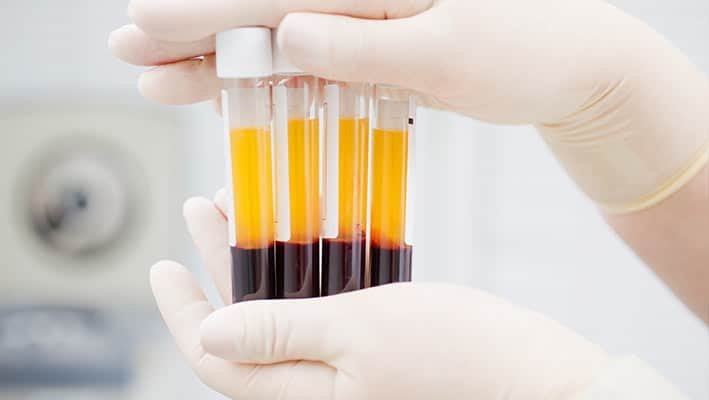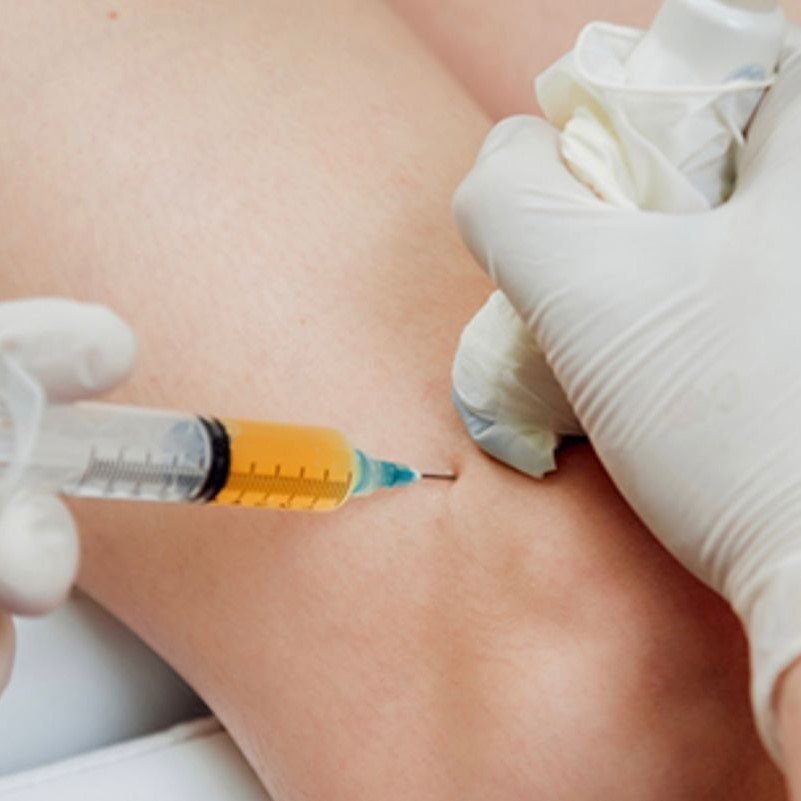Since the concentration of platelets and in turn growth factors is more in the PRP, the healing is much faster.
The process of PRP is very simple and involves drawing patients blood, separating the plasma, concentrating the platelets and then injecting it precisely into the damaged area.
The procedure is OPD based and lasts for less than an hour. Recovery period is short. Most patients report relief of symptoms within a few weeks.
Platelet-Rich Plasma (PRP) Injection
PRP is plasma with highly concentrated platelets. As a concentrated source of autologous platelets, PRP contains (and releases through degranulation) several different growth factors and other cytokines that stimulate healing of bone and soft tissue.
What are the clinical indications for using PRP?
PRP is being studied and used for many orthopaedic conditions.
For example, there are over 30 levels, studies published showing that PRP is a better treatment than steroid or hyaluronic acid injection for knee osteoarthritis. PRP has now been used and studied for virtually every joint tendon, ligament injury in orthopaedics. PRP has also been shown to be effective in treating back pain from various conditions such as disk disease, or facet arthrosis.
What growth factors and cytokines are in PRP?
Some of the growth and healing factors found in PRP include:
- Platelet Derived Growth Factor (PDGF)
- Fibroblast Growth Factor (FGF)
- Vascular Endothelial Growth Factor (VEGF)
- Interleukin 8 (IL-8)
- Transforming Growth Factor Beta (TGF-b)
- Insulin like Growth Factor 1, 2 (IGF-1,2)
- Epidermal Growth Factor (EGF)
What are the clinical indications for using PRP?
Tendonitis (Chronic tendonitis or partial-thickness tears)
- Rotator cuff
- Biceps
- Golfers/Tennis elbow
- Tendonitis around the thigh (Gluteus medius, hamstring, piriformis syndrome)
- Patellar or quadriceps tendonitis
- Tendonitis around the ankle (Peroneal, Tibialis posterior)
- Achilles
- Plantar fasciitis
- Ulnar collateral ligament injury of the elbow
- Medial collateral ligament injury of the knee
Degenerative Joint Disease
- Knee osteoarthritis
- Shoulder osteoarthritis
- Elbow osteoarthritis
- Wrist osteoarthritis
- Ankle osteoarthritis
- Hip osteoarthritis
- Symptomatic articular cartilage injury
What happens after the PRP injection in the clinic?
Most patients will have some soreness after the injection that should decrease rapidly. Patients should not take aspirin or other NSAID medications after the procedure because they may block the effect of PRP . Patients can use Paracetamol that doesn’t block the inflammatory process. Patients should refrain from significant physical activity or sports activities for a week after the procedure. Patients are re-evaluated often after the procedure to make sure their recovery process is proceeding according to plan.


